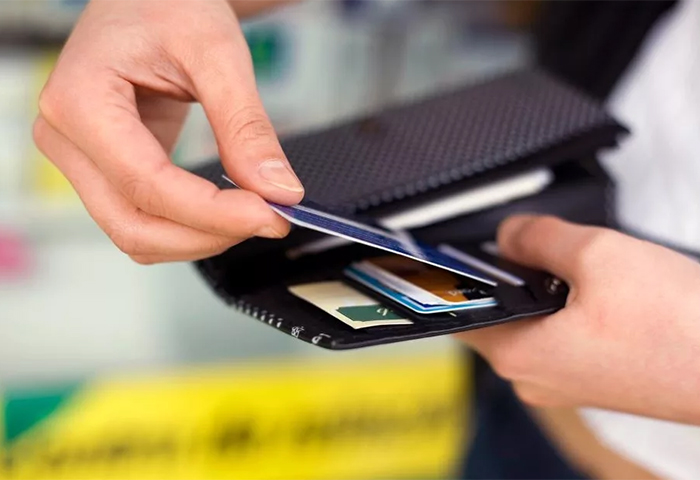What's again? Reviving Non-Bank Debit Cards
- Transfer

In 2007, the media was full of headlines about a revolutionary product that would change the fates of merchants and give consumers countless benefits. Analysts called the product a “historical chance” to improve subsiding profit figures. And innovators rushed to create new applications to grab onto this opportunity.
What was it? No, not the iPhone, although such an assumption is quite logical. We are talking about debit cards without being tied to banks.
The culprit of the "revolution" was Capital One, one of the largest banking holdings. His proposal was considered by many to be a brilliant move against the background of a lack of demand for time deposits and the lack of organizations with other ways to provide debit offers that would attract and keep consumers.
A little historical background
На самом деле с подобным предложением первой выступила компания Tempo, созданная в 2000 году, несколько лет неудачно пытавшаяся достичь популярности у мерчантов и выкупленная в 2006 году компанией HSBC.
The new product received funds from deposit accounts of other issuers and worked for any merchant accepting MasterCard. With it, Capital One holding simultaneously offered consumers something fresh and implemented an innovative business model around which a new loyalty program was created.
For users, the benefit was to get functionality similar to debit products. Funds to pay for the services of merchants were taken directly from user checking accounts, and there was no need to transfer your deposit account to a certain bank for the sake of a profitable cashback.
Inspired by the prospects, retailers began to develop their own products with the same benefits: debit functionality, large rewards for loyal customers and reduced interbank fees for all transactions in their stores.
And these efforts ...disappeared in vain.
With the exception of a handful of specialized cases, debit cards that are not tied to bank accounts have not gained mass popularity. Merchants have released quite a few of these cards, and non-bank debit has accounted for a small percentage of all ACH transactions.
However, more than ten years later after loud statements and rather mediocre results, non-bank debit again hit the news feeds . And again he is described as a miracle tool for the release of merchants from interbank commissions. Only today, according to the media, in the era of branded merchant applications, non-bank debit has become even more powerful. This phenomenon has received a new name, and in the EU countries it is also a new ally in the person of the regulator, under the auspices of PSD2 who has breathed new life into such projects.
But there is a problem. Most American consumers once did not fall for this type of product, and today they have even more reasons not to use it.
2018: old song in a new way
After reading the latest Bloomberg material on how retailers throw their strength on launching branded payment applications that work directly with ACH, and look for ways not to pay interbank fees, there is a desire to double-check the release date of the article due to a strong deja vu.
It’s as if this article takes us back to 2000, and then to 2007, when the initial rush related to non-bank debit arose.
Or in 2010, when Softcard was launched with its merchant-oriented mobile payment scheme.
Or in 2012, when earned CurrentC - branded mobile payment product based on ACH.
And every time the media talked about how wonderful these initiatives are from the point of view of the merchants.
Detailed financial models promised merchants billions of dollars in savings from using a new scheme that bypasses card networks. Beautiful PowerPoint diagrams showed examples of the implementation of such schemes, guaranteed savings and improvements in total profit.
However, all calculations ignored a simple but important fact: consumers themselves chose to pay merchants with bank cards and take advantage of this type of payment.
As a result, many of the non-bank debit projects are either already closed or are living out their last days.
Even the only successful story - Target REDCard - has reached its plateau. During the launch in 2007, this project was represented by a child prodigy in the world of branded ACH payments and a pioneer among merchants who want to retain the most loyal customers through offering an economically advantageous payment product. REDCard holders tied the card to their checking account and received 5% cashback on any purchases using it.
Today, according to Target , REDCard transactions account for almost 24% of network sales, and this is a solid figure. A quarter of all sales is a decent figure for a modern payment method. However, it is possible that the project will not be able to jump higher than this bar.
According to the data for 2010-2013, sales increased from 6% to 19%, which is pretty good. But in the period from 2013 to 2015, the situation changed. Since 2013, the same year when data leaked to Target, product growth rates began to drop significantly. Over the past two years, REDCard sales have grown from just 19% to 22% of total Target sales. And two years after 2015 brought only 2% growth.
In May, the retailer offered a new loyalty program with the ability to link it to any customer payment card. However, users of REDCard, whose basket size, according to Target, is 50% larger than that of regular customers, will still receive a greater reward. But top managers of Target admit that not all consumers will use the new payment method in order to be called loyal retailer customers and receive bonuses.
So how does a new wave of interest in non-bank debit cards differ from the past? It turns out that nothing. Although there is one difference.
Battle for commissions
For the past 60 years, merchants have been trying to circumvent interbank commissions that operate when paying with bank cards. And this is despite all the benefits that have brought them the spread of bank cards as a method of payment.
The struggle continues, even though the merchants manage to seduce only a handful of consumers with branded cards. They are also not stopped by fruitless attempts to launch cards linked directly to user ACH accounts, whose projects involved large investments and promotion costs.
Consumers do not use such cards for one simple reason. They make payment decisions for reasons of personal gain, and not the savings that the merchant can receive.
And if you turn to the experience of experiments with mobile and contactless payment methods, you can learn a lesson: it is very difficult to get consumers to change established habits. Even the most effective advertising and promotion of various mobile products did not lead to an increase in consumer interest in them.
It is also unclear what the merchants are trying to deal with when it comes to interbank commissions. Derbin's amendment limited the maximum commission to 24 cents, significantly reducing the difference between direct work with ACH and debit bank cards. This change led to the closure of many non-bank debit schemes that existed during its entry.
If one imagines how events would have developed in the absence of a Derbin's amendment, there would still be no reason to believe that consumers would want to take advantage of the lucrative offers of non-bank debit. All because of the numerous and continuing leaks of personal and financial user information from the systems of many merchants.
According to some sources , there have been 4,500 burglary and data theft incidents in the United States since 2005, 3455 of which occurred after a massive data leak in Target in 2013. Merchants have been the victims of many such cases, and the billing information of their customers has been made publicly available. Fortunately, consumers could easily replace bank cards and were generally protected.
As for debit products based on ACH, their level of protection is questionable. Consumers will probably think twice before providing their bank details to unreliable merchants.
In the summer, the analytic group PYMNTS conducted a study in which consumers were asked who they trusted in matters of innovation payment experience. Not surprisingly, the merchants (with one exception) were far from the first places. If not to say that closer to the latter.
The top five are card issuers, PayPal and Amazon. It seems that consumers need a “protective layer”, a trusted intermediary who would stand between their billing data used by the merchants and the funds in their bank accounts. People willingly use their debit cards, but only those issued by banks.
This state of affairs should not upset merchants, given that technologies and digital platforms open up new channels of communication between them and the consumer. The favor of consumers for these new products depends on their confidence that every click on the payment button is properly protected.
As for the interbank commissions and the current business model, which provides a turnover of trillions of dollars, someone has to pay for it.
Consumers do not pay, so this burden falls on the merchants. The largest of them pay a little, despite the high level of protection that consumers get in return. And for each history of the promotion of payment schemes, branded by merchants and reducing their costs, there are a thousand of their colleagues who just want to make a sale before anyone outpaces them.
Also, the irony is that before the need to reduce interbank fees was explained by the desire of merchants to balance the costs of accepting credit cards and cash - a payment method that they once called the most profitable for themselves.
But even here there have been changes.
Non-cash payment methods become major as merchants move from paper money and coins to digital interactions for the sake of efficiency and improving the quality of service. Consumers, too, are increasingly resorting to bank transfer, as cash provokes difficulties and delays in queues in front of the cashier.
And now merchants, who advocated regulating the use of cards, in order to keep cash in hand, will have to obey laws that force merchants to accept cash without fail.
In any case, the legislature of the state of New Jersey is already considering a similar bill.

